'The Temptation of Saint Anthony'
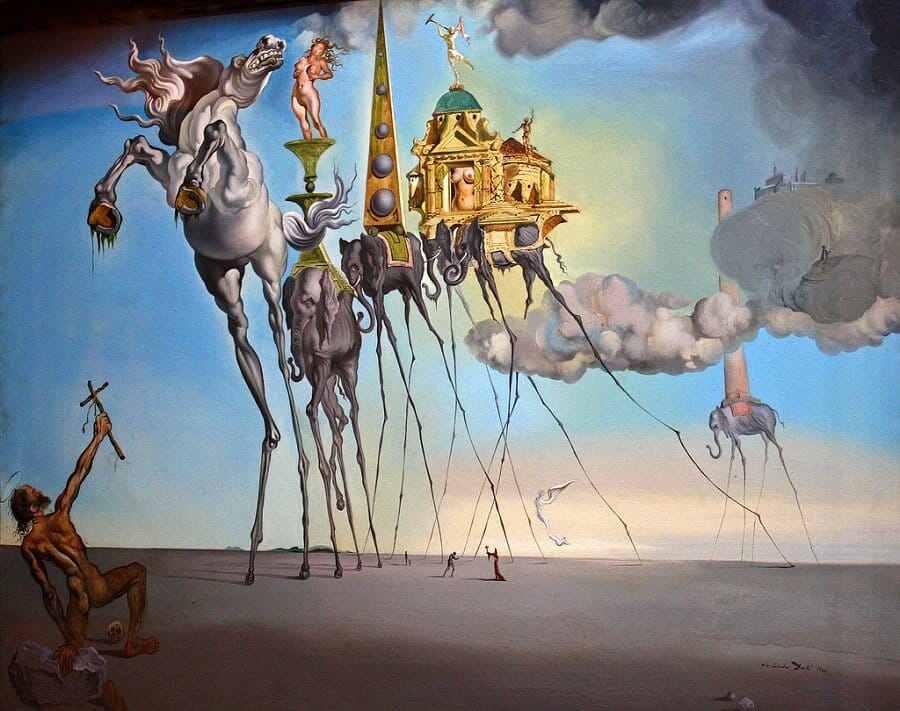
The ultimate fable of sexual temptation. Saint Anthony was a Christian saint in Egypt who may have died around CE 356 (his monastery is here). His claim to fame is his sojourn in the desert, fending off Satan and all manner of monsters and demons. But it is difficult to avoid the conclusion that the temptations included sex, for what else would the saint be fending off?
There is no sex in this painting of 1487-88, attributed to a 12- or 13-year-old Michelangelo; it is a color version of a Martin Schongauer engraving:
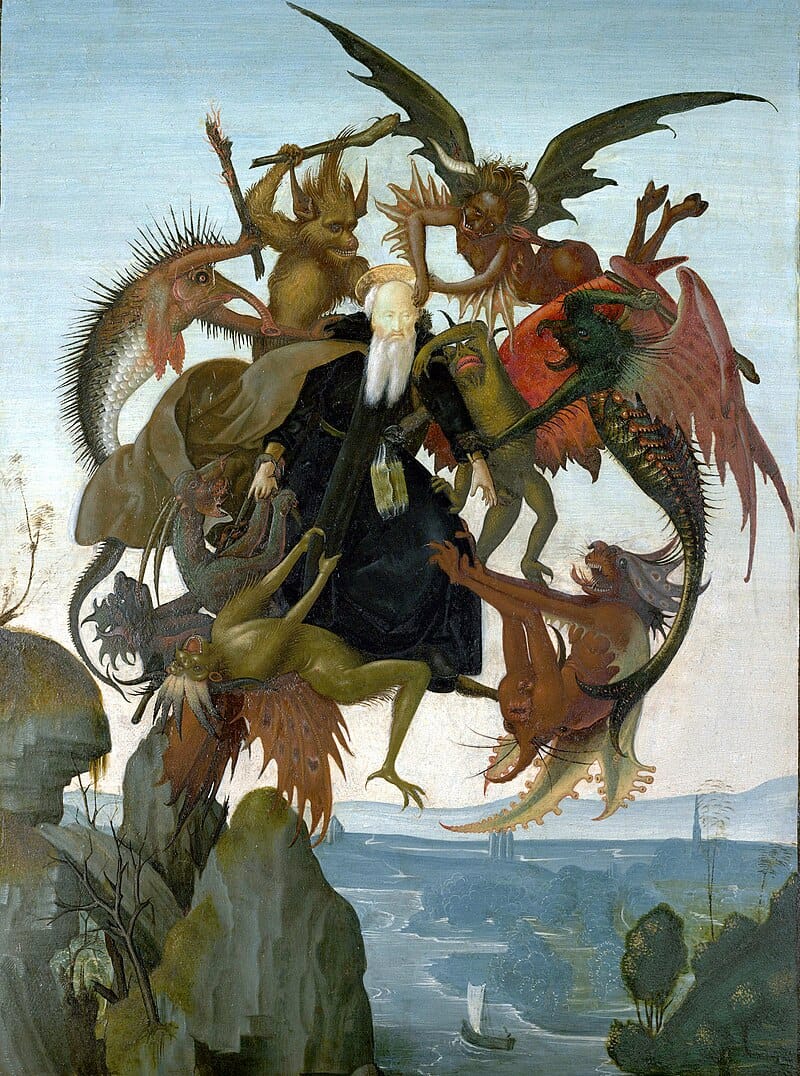
Around 1500, with the Reformation around the corner, the theme became popular among northern European painters such as Schongauer, Hieronymous Bosch and Matthias Grünewald.
Then there is St. Anthony’s Fire: the "fire" refers to the burning sensation of this disease, which is also known as ergot poisoning or ergotism. The medical literature suggests it may refer to "at least three distinct diseases, one toxic (i.e., ergotism) and two infectious (i.e., erysipelas and herpes zoster)...(and) even some cases of plague may have been misclassified as “St. Anthony’s fire.”"
Shown below is a detail from the very large Isenheim Altarpiece, sculpted by Nikolaus Hagenauer and painted by Grünewald (in 1512-1516); it shows a man afflicted by the toxic form of the disease. It is brought on by ingesting rye grain or other cereals that have been contaminated by the Claviceps purpurea fungus and it can lead to seizures and gangrene. The name derives from medieval Benedictine monks dedicated to St. Anthony who treated the afflicted at places like Isenheim, which is near Colmar in Alsace, although I'm sure much of the "treatment" involved praying in front of the altarpiece and priests waving holy relics around.
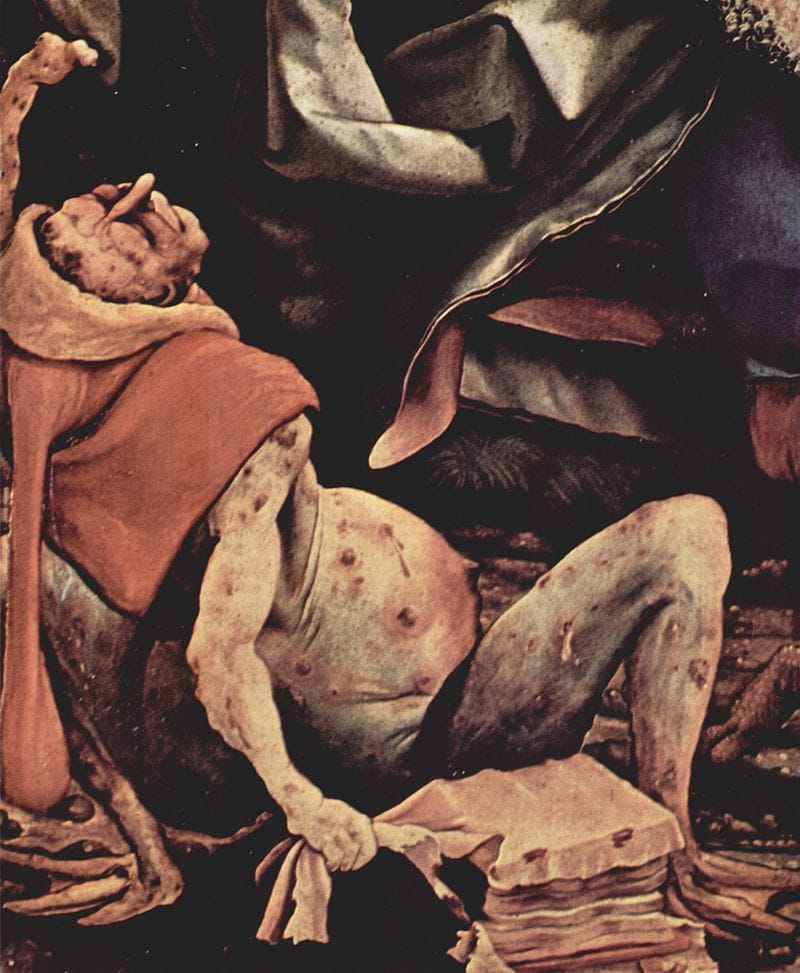
Below is a work by Flemish painter Pieter Huys, around 1547, when sex first got to the front of the line, with that rather fetching woman in front of St. Anthony holding whatever it is. Is it food? Has he noticed?
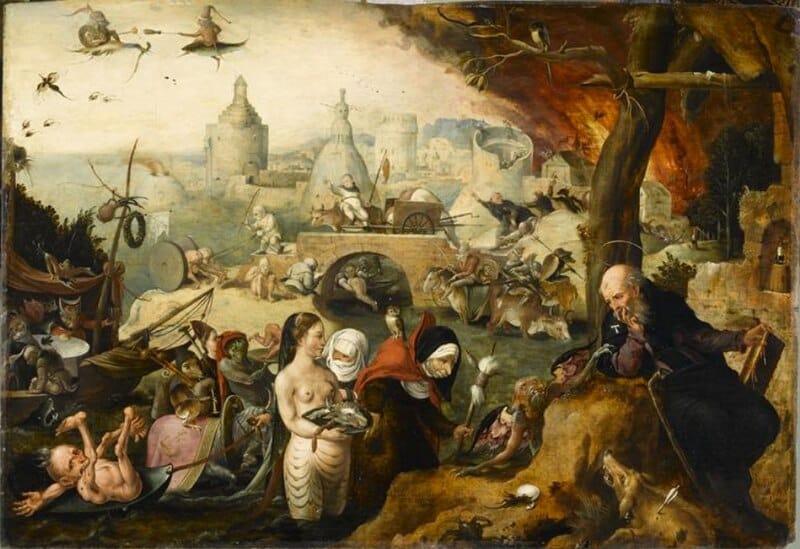
Below is Pieter Bruegel the Elder’s preparatory drawing for his own version in 1556. That's St. Anthony bottom right, ignoring the distractions:
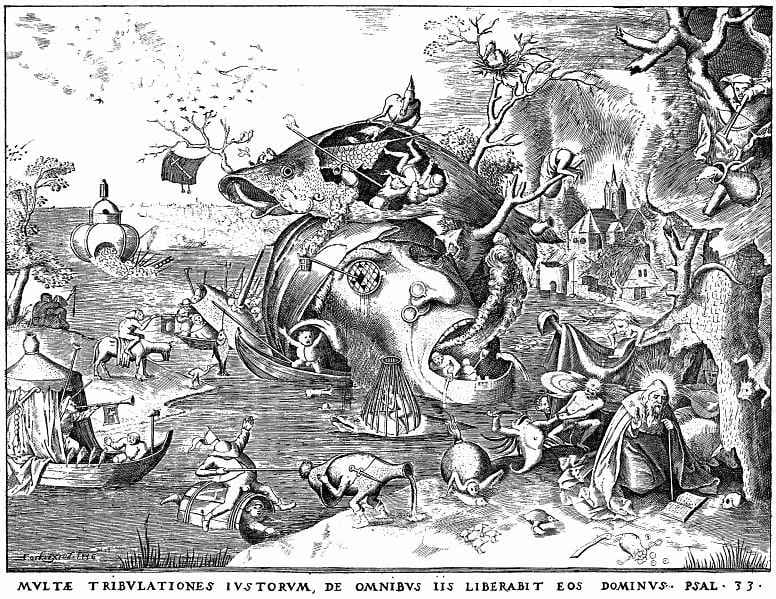
Below are paintings from the 1600's by the Flemish Joos van Craesbeeck and Italian Salvator Rosa.
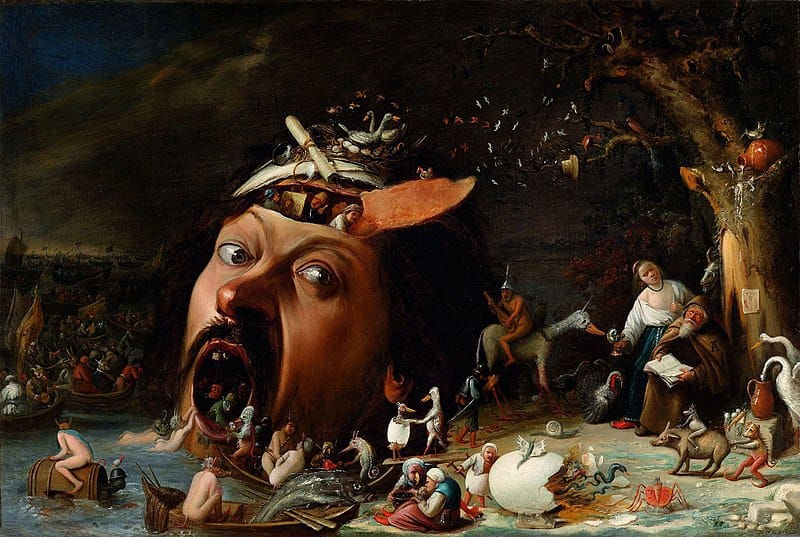
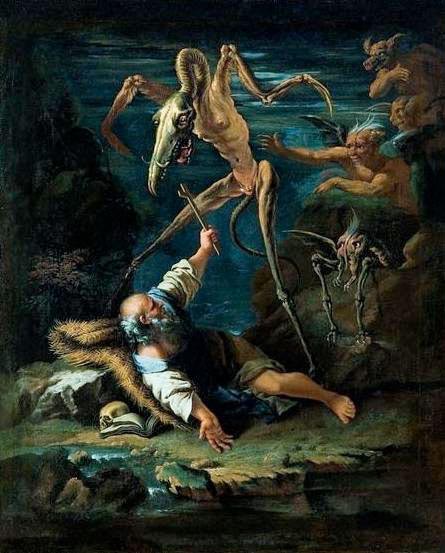
The story fascinated Flaubert and Félicien Rops (here), among others, and Salvador Dalí who had a field day with it (image at top).
